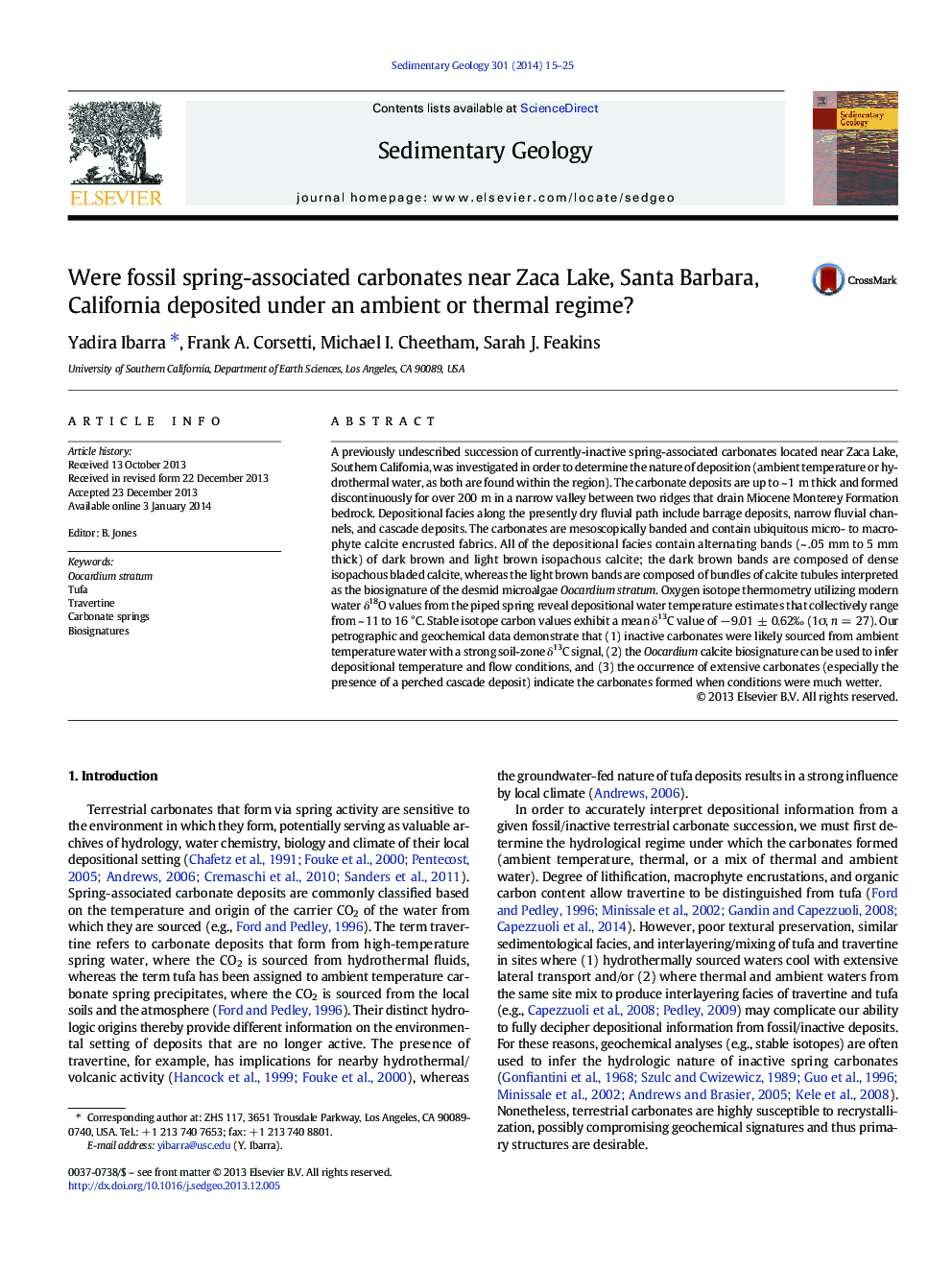| Article ID | Journal | Published Year | Pages | File Type |
|---|---|---|---|---|
| 4689419 | Sedimentary Geology | 2014 | 11 Pages |
A previously undescribed succession of currently-inactive spring-associated carbonates located near Zaca Lake, Southern California, was investigated in order to determine the nature of deposition (ambient temperature or hydrothermal water, as both are found within the region). The carbonate deposits are up to ~ 1 m thick and formed discontinuously for over 200 m in a narrow valley between two ridges that drain Miocene Monterey Formation bedrock. Depositional facies along the presently dry fluvial path include barrage deposits, narrow fluvial channels, and cascade deposits. The carbonates are mesoscopically banded and contain ubiquitous micro- to macrophyte calcite encrusted fabrics. All of the depositional facies contain alternating bands (~ .05 mm to 5 mm thick) of dark brown and light brown isopachous calcite; the dark brown bands are composed of dense isopachous bladed calcite, whereas the light brown bands are composed of bundles of calcite tubules interpreted as the biosignature of the desmid microalgae Oocardium stratum. Oxygen isotope thermometry utilizing modern water δ18O values from the piped spring reveal depositional water temperature estimates that collectively range from ~ 11 to 16 °C. Stable isotope carbon values exhibit a mean δ13C value of − 9.01 ± 0.62‰ (1σ, n = 27). Our petrographic and geochemical data demonstrate that (1) inactive carbonates were likely sourced from ambient temperature water with a strong soil-zone δ13C signal, (2) the Oocardium calcite biosignature can be used to infer depositional temperature and flow conditions, and (3) the occurrence of extensive carbonates (especially the presence of a perched cascade deposit) indicate the carbonates formed when conditions were much wetter.
